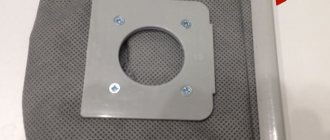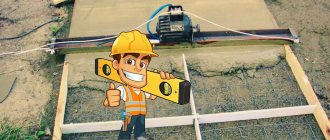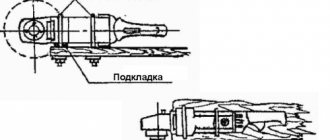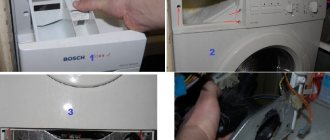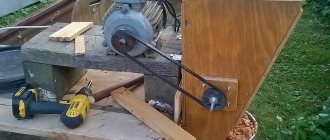Is it possible to dismantle the air conditioner with your own hands?
It is enough to have a pre-purchased specialized tool on hand, know some technical subtleties and take your time. The question arises: why waste time and effort if you can call the appropriate specialists who will perform the necessary operations in a short time? You can, but there are two reasons why you shouldn't:
- Price is the most important aspect. The average pricing policy for dismantling a modern split system is 4,000 rubles. We are talking about small apartment models. If the device has substantial dimensions and is installed mainly in offices, then the price will rise to 10,000 rubles. Quite significant for the budget.
- The likelihood of ending up with low-quality “specialists”. The modern desire of the population to do their own business leads to the massive appearance of people who do not understand the work they do. Also with some air conditioning “masters”. Therefore, the chance increases that the procedure will be performed poorly at a high cost.
But it should be said right away that manually removing a split system cannot always be successful. A common problem is the complete leakage of freon, which is quite expensive, and the price of a new one is at least 1,500 rubles. Therefore, when removing the air conditioner with your own hands, all actions should be performed accurately.
How to turn off electrical circuits
The last step before dismantling is to disconnect the electrical circuits. This can only be done after removing any remaining refrigerant. Finding the shutdown location is very simple - most often it is located on the back side of the outdoor unit of the air conditioner.
If you can’t find a diagram, or it seems too complicated, then you should sketch out the entire diagram before turning it off. Only those conductors that go from the indoor module to the outdoor unit should be disconnected. In addition, it may be necessary to dismantle the network supply. This is quite difficult to do, since it is located inside the building.
Once everything is disconnected, you can begin to remove the outdoor unit from the brackets. If you do everything according to the instructions, then there will be no problems with subsequent installation and switching on.
The necessary tool and its possible replacement
If you have the means, you can hire a specialist to remove and install modern split systems, without even paying attention to the manufacturers of this tool, which changes the pricing policy. But then the point of independent dismantling, which is carried out in order to save money, disappears. Therefore, some types of tools are best replaced with cheaper ones, and some will have to be abandoned altogether.
List of tools required for disassembly:
- Gauge manifold. This is a necessary thing, as it will show the pressure when pumping freon into the outdoor unit. And this particular measuring device falls into the category of tools that you should discard (at your own peril and risk), since its minimum cost is 1,500 rubles. A more reliable one will cost 3000-3500 rubles.
Example of a pressure gauge for split systems
- Set of hexagons. This position is mandatory, since the fitting cannot be unscrewed any other way. Fortunately, the price of such keys is not exorbitant - 3000-350 rubles.
- Pipe cutter It is inexpensive (about 300 rubles), but you can reduce costs even further and purchase an ordinary hacksaw, which will later be useful for housework.
- Flat and figured screwdrivers. Now they are sold in any hardware store or hardware store.
- Safety equipment if the air conditioner is located on upper floors. It’s not worth saving here, and not paying for a product whose cost is less than 1000-1500 rubles.
And one more prerequisite is the presence of an assistant, or preferably two. Both the external and internal units have a significant weight, so it will be problematic to handle it yourself; you can accidentally damage the device.
Disassembly in winter
If the outside temperature has dropped to -5°C or more, it is recommended to refrain from dismantling for the following reasons:
- it will not be possible to pump the refrigerant into the external module;
- in cold weather, you cannot disassemble connections, unscrew plugs or close service ports;
- As a result of disassembly, service valve seals often fail.
In a situation where you cannot do without removing the split system at subzero temperatures, be sure to warm up the fittings of the outdoor unit with a hair dryer. Then unscrew the plugs and close both valves, thus retaining some of the freon remaining in the outdoor unit circuit. Then slowly unscrew the lines from the fittings and disconnect them, releasing the second part of the refrigerant into the atmosphere. Then proceed according to the algorithm described above.
Personnel from specialized companies use pressure gauge stations to pump out freon in winter. But if you rent such equipment, then dismantling will cost more than paying specialists, and the result will be dubious.
At temperatures above -5°C, you can perform work according to standard instructions, but it is advisable to use a pressure gauge to control the pumping of refrigerant. If you act “by eye”, you may not guess the holding time and will still lose some of the freon. It is equally dangerous to keep the compressor running without cooling (and it is cooled by circulating freon); overheating can cause it to fail.
You will successfully dismantle your home air conditioner if you get to work during the warm season and follow the instructions provided. You must not miss a single detail, act very carefully and without haste. Do not neglect the pressure gauge, since the loss of refrigerant will negate all savings from this procedure.
What to pay attention to when dismantling
The most fragile place in an air conditioner is the compressor pump. Despite its compact size, the design of such a pump includes complex mechanical components: rotors with cams, sealed system elements and a chamber in which the main work takes place.
If ordinary dust gets in, the walls of the chamber may be damaged, and accordingly, freon will move aimlessly around the system without performing any useful work. Therefore, the main slogan when dismantling the air conditioner is to preserve the vacuum in the system, which, in turn, requires the tightness of all external openings.
What you need to know about air conditioner refrigerant?
Unfortunately, breakdowns of air conditioners, like other equipment, are not uncommon. Therefore, a potential technician, even a “home” one, will need theoretical and basic information regarding the same freon if he plans to install, dismantle or repair an air conditioner.
Modern air conditioning devices, household or office, use refrigerant for operation, the brand of which is indicated in the air conditioner passport, as well as directly on the equipment body.
The procedure for installing a household air conditioner through the eyes of specialists looks quite simple. They consider dismantling the air conditioning system even simpler
Therefore, the first thing a home mechanic needs to know is, of course, the brand of refrigerant used in the system. The brand of freon is determined by reading the information on the technical plate of the device, which is always present on the housing of the outdoor module.
What is this information for? For the correct execution of installation (dismantling) and commissioning work.
The so-called “nameplate” of the air conditioner is a technical plate on the housing of the outdoor module, which indicates the brand of refrigerant used by the system. In this case, the brand indicated on the plate is R410A
Freon is a very fluid substance. That is, if there is even a slight violation of the tightness of the system, this refrigerant completely escapes. This class of substances refers to chemicals that can destroy the ozone layer of the atmosphere. Accordingly, the release of freon into the atmosphere is unacceptable in principle, even in small volumes.
When installing a new air conditioner, the risk of refrigerant leakage is minimal, but the process requires a certain technological approach. However, the situation is completely different when dismantling the system. We will talk further about how to remove the air conditioner so that freon does not leak out of it.
Main types of removal: with and without freon preservation
How to remove or hang the air conditioner from the wall without losing freon? As mentioned above, freon is quite expensive, and when removing the air conditioner yourself, it should be saved. But if the service life of the device is long, and the freon needs to be replaced, then when moving, you don’t have to save it, but simply drain it and dispose of it.
If you decide to keep the freon, then the sequence for removing the air conditioner is as follows:
- On the outside of the split system there are service valves with protective caps covering special slots. To access the slots, the caps should be disassembled and the hexagon should be installed only in the valve on the thin tube located at the bottom of the device.
Removing special hex splines
- Now you should set the lowest air cooling temperature and turn on the device at maximum operating mode. Some models have a turbo option.
- After switching on the enhanced operating mode, the valve (with the hexagon installed) should be tightened. From this moment, the system must operate for at least one minute, during which all the freon will flow into the external unit.
- After freon is pumped into the outdoor unit, the gas line is shut off and the device is turned off. It should be remembered that continuing to operate the air conditioner in this mode with two valves closed will lead to damage to the split system.
- Unscrew the nuts securing the copper lines covered with a heat-insulating layer, which should also be removed. Now the tubes bend neatly and can be removed through the hole in the wall.
An assistant is required when removing the external unit
After completing all of the above operations, you can begin to directly dismantle the air conditioner, which is best started by removing the external unit.
It is very important to remember that the pipes should be sealed after removal. Often, simple adhesive tape, film or electrical tape is used for this. A more reliable way is to close them using simple pliers. If you approach the problem with full responsibility, then the ends of the pipes should be securely closed using a bench vice, thus preventing the penetration of moisture and dust into the evaporation chamber.
Dismantling in winter
The air conditioner can also work in winter. And not only as a heater, but also in cooling mode (for example, in rooms where servers are located).
Note. It is possible to collect freon in the condenser of the outdoor unit only when operating in cooling mode - in heating mode it already works as an evaporator.
The peculiarity of working in winter in this mode is that there is a lower temperature limit, which is affected by the type of refrigerant, type of air conditioner and additional equipment. This dependence is also related to the design features of the compressor - it is oil-based, and oil thickens at low temperatures. For conventional air conditioners, the lower operating temperature ranges from +5°C to -5°C, for inverter air conditioners - up to minus 15-25°C.
Before dismantling the split system, these nuances must be taken into account. And if the temperature is below the specified limit, and the air conditioner is not equipped with a “winter kit” with heated compressor crankcase, then to remove the outdoor unit you must use a freon pumping and collection station (it has an oil-free compressor).
How to properly and quickly dismantle the external unit of a split system
This procedure should not be performed if the system is installed on the upper floors of a multi-story building. This can be life-threatening.
Removing the external unit on the upper floors
Removal of the external unit of the split system occurs only after all the above operations have been correctly completed. Dismantling should begin by disconnecting the input electrical cable, the wires of which are suitable for the air conditioner terminal box, located under a special protective cover. To simplify the connection of the device at a new location, the wires should be marked with the appropriate colors (red - phase, blue - zero, yellow-green - ground).
All that remains is to unscrew the nuts that secure the air conditioner to the brackets. This is not a problem, but an assistant is needed to support the external unit during the entire process. Once the nuts are unscrewed, you can carefully remove the unit and prepare it for transportation.
Don't forget the brackets to which the air conditioner is attached. They are usually mounted using dowels to the outside of the wall, and dismantling takes a little time.
You should know that split system manufacturers strictly prohibit the transportation of devices into which freon is pumped. Why? The answer is simple: after all the above actions, excessive pressure forms in the system, and the air conditioner housing is not designed to withstand even the slightest mechanical impact. Therefore, without the necessary conditions (covering the block with a sealant or special film), the block body can simply break through. This can be understood by the characteristic hissing.
How to operate a pressure gauge station
The station body is a block. There are two pipes on its side surface. There are two different tubes coming from them.
- The one that is thin ensures the transfer of liquid refrigerant from the condenser to the evaporator.
- Thanks to the thick tube, freon gas enters the condenser unit.
Each fitting has a special valve. It is needed to shut off the freon supply.
The condenser is filled with freon using a standard system.
- The protective covers of the pipes and nipples are dismantled.
- The nipple is connected to the manifold.
- The air conditioner turns on and sets to maximum cooling mode.
- After this, you should wait 4-5 minutes and close the valve of the pipe, which is responsible for supplying liquid freon. This action interrupts the supply of refrigerant to the evaporator.
- Pressure control is carried out using a pressure gauge.
For the last stage of working with the pressure gauge station, an assistant is required. The fact is that as soon as the indicator shows -1 MPa, you must immediately close the gas fitting. If you delay, the compressor pump will start to idle, and this will negatively affect the performance of the entire air conditioner as a whole.
Removing the indoor unit
After the external unit has been dismantled, it is necessary to dismantle the internal (located in the room) air conditioner unit. There are fewer problems with it, since there is no need to work even at low heights, but there is a certain dismantling procedure and additional tricks.
Don’t relax and think that it’s enough to unscrew a few nuts, remove the indoor unit, and send it to a new place. The main trick lies in the desire of air conditioner manufacturers to make the process of removing the device as inaccessible as possible for craftsmen. That is why each indoor unit has a latch system with which it is attached to the wall. You can only work with such fasteners using a special tool, but there are no hopeless situations, and it is quite possible to choose something simpler.
Two screwdrivers will help you quickly remove the latches
Another tip: when removing a block, it is best to have not one assistant, but two. This is due to the fact that the indoor unit is quite bulky and heavy, and one person may simply not be able to handle it.
The two most common options for removing the indoor unit are:
- The simplest design is sometimes the most complex, which is why manufacturers of split systems try to hide the latches under the evaporator cover. The cover bolts are located inward, so to unscrew them you will need a special short bit in the form of a shaped screwdriver and a head with a ratchet.
- In addition to securing the evaporator cover, they try to make the latches themselves internal. If you don't have a special tool, you can use two flat-head screwdrivers and push them between the bracket and the wall. Now it’s enough to press a little (you shouldn’t be too zealous, they can be removed without effort), and an assistant can easily remove the internal block.
Removing the indoor unit with an assistant
There is one circumstance that can significantly interfere with work - the presence of a large number of evaporation tubes, and they are usually located near the mounting brackets. Therefore, when working with brackets, you should be as careful as possible so as not to damage them.
When is it not necessary to remove the air conditioner?
Based on the scale of the planned repair and the tight fit of the indoor unit to the wall, instead of immediately starting to dismantle the air conditioning system, you can resort to another way to resolve the issue.
Case No. 1
If you plan to re-glue the wallpaper and the gap between the wall and the indoor unit is large enough, then it is not necessary to dismantle the entire air conditioner, just disconnect the unit from the plate.
Case No. 2
If during the renovation you plan to plaster and level the walls, then you can also dismantle only the indoor unit. Upon completion of the repair, the length of communication should be sufficient for reinstallation of the module.
Case No. 3
There are cases when the block needs to be dismantled along with the route. This may be caused by a number of circumstances:
- it is planned to “lower” the ceiling;
- the nuts for connecting the route to the module are located in the wall;
- in order to prevent the connection of nuts inside the wall after repair;
- to move the indoor unit.
Case No. 1
Case No. 2
How to properly re-hang an air conditioner
Situations often arise in which relocating an air conditioner is more important than completely dismantling it. In this case, one of the blocks is left in its place, and for the second the tubes are simply extended. The process of removing both the internal and external units is no different from those described above, the only difference is the need to build up copper or ordinary pipes.
When dismantling one of the units, you should also monitor the safety of freon and pump it into the outdoor unit before carrying out all operations. After undocking the split system, it is necessary to rehang it as carefully as possible, without damaging the air conditioner housing. To save more money, you don’t have to do the soldering of pipes yourself, but entrust this task to specialists. Split system service technicians have a corresponding column in their price list, which is called extension of the interblock route.
How is freon discharged?
There are several ways to remove a working air conditioner.
- An ordinary pressure gauge station is used. With its help, all freon is pumped out.
- Using a special station connected to a cylinder with two valves. Such a device pumps out liquid and gaseous freon.
The first option is considered simpler. However, this requires running the air conditioner. But you can do this only if it’s not too cold outside.
The second option is more complicated, but it can be used in almost any situation, even when it’s cold and turning on the air conditioning is prohibited. In addition, this method has another advantage: freon will be completely pumped out of the condenser. Thanks to this, it is possible to transport the air conditioner from place to place.
The use of such a station allows for dismantling in winter
However, this method also has disadvantages. The main one is the high cost of renting a station and a cylinder, which is very different from the price of a simple manometric manifold.
Some useful tips
Having prepared the necessary tool, read the instructions and watched the corresponding videos on the Internet, you should also learn several important subtleties:
- Both when completely dismantling the split system, and when partially moving the device, you should not worry too much about the safety of the copper pipes. Replacing them will not cost too much money and installing new ones is always better than repairing old ones.
- If it is difficult to understand which pipeline is liquid and which is gas, then you need to pay attention to the diameter of the pipes. The liquid pipeline, which is also the outlet pipeline, is always thinner than the gas supply pipeline.
Examples of pipes on an air conditioner
- During transportation, the system should be covered with any seal, since any blow to the housing can lead to loss of freon or failure of the device.
And the most important advice is never to rush, since these systems require precise and careful movements; strength will not always help here.
Why is it necessary to drain freon?
An air conditioner is an indispensable appliance that can quickly cool a room on a hot day. However, sometimes situations arise when it needs to be dismantled. In certain cases this is very easy to do. For example, when the equipment is completely out of order and they are not going to repair it. During such work there is no need to maintain the tightness of the main components of the air conditioner.
If the air conditioner is working properly, but it needs to be removed, then the principle of operation is different. The main thing here is to make sure that dust and air do not get inside the system. If this happens, then after installation and startup of the device, the compressor will almost certainly fail. The main reason for this is considered to be the complex design of the vacuum pump.
The principle of operation of the split system
It is connected with the properties of freon. It is very fluid, very cold at the entrance to the system, and very hot at the exit. Therefore, conventional pumps or compressors are not used in air conditioners. The fact is that their gaskets and seals simply would not withstand constant use under conditions of constant temperature changes. High tightness of the vacuum pump is achieved by high-precision fitting of the surfaces of moving parts and internal surfaces of chambers. This is a very difficult and delicate job, since even the smallest scratch can cause the compressor to fail. A grain of ice that forms if air gets inside can break the air conditioner. As a result, moisture freezes and can cause damage.
To avoid these problems, modern air conditioners are immediately filled with inert gas, which is removed before the system is filled with freon. A vacuum pump is used for this.
Vacuuming: why and how to do it
Vacuuming is necessary in order to clean copper tubes from air and moisture that gets inside during installation. If it is not removed, a large load will be created, and the compressor will accordingly overheat.
There are two ways to evacuate a split system.
Spray method
If you look at the port into which the copper tubes are connected, you can see two plugs, in addition to the nut with a fitting. Both plugs are unscrewed.
Work is carried out with a larger diameter port. Inside there is a special slot for a hex key. The size is selected according to location, and can also be found in the instructions.
Turn the valve 90 degrees with the key for 1 second, then release. This means that a little freon was released into the system, resulting in excess pressure. On the same port there is a spool, which must be pressed with your finger to start the release of a mixture of freon and residual gases. The operation is carried out for 1-2 seconds 2-3 times.
After everything, a plug is put on the spool, and the hexagon port is completely unscrewed to release freon into the system
It is important to make sure that all plugs are tightly screwed in; you can lubricate the threads with soap for a better seal
Vacuum pump
The vacuum pump is connected to the spool for 20-30 minutes. During this time, he must completely vacuum the system. Then the pump turns off, but the tube remains in the spool for 15 minutes. This is necessary in order to monitor the pressure using a pressure gauge. If the arrow freezes and stands still, then everything is fine. Chaotic movement of the arrow indicates an air or moisture leak, so the pump should be turned on again.
Before disconnecting the pump, you must let freon into the system using a hex wrench. A characteristic sound in the system indicates a successful launch. After this, you must quickly disconnect the pump.
Preparing the air conditioner: “packing” freon
So, first of all, it is necessary to ensure the safety of the refrigerant. To understand how this is done, you need to remember the design of the split system. It is a closed circuit filled with freon, which consists of a compressor, two relatively speaking chambers (evaporator and condenser) and freon pipes connecting these elements (copper tubes).
Split system design diagram
The refrigerant flows from the condenser to the evaporator in liquid form, so the tube through which it flows has a smaller diameter.
The second freon line - from the evaporator to the compressor - carries freon in a gaseous state, so the diameter of this branch is increased.
To carry out dismantling without loss of gas, it is necessary to collect it in a condenser:
- while the air conditioner is operating, the valve between the condenser and the thin tube is closed for cooling;
- when all the refrigerant, thanks to the operation of the compressor, “moves” into the condenser, you will also need to close the valve between the thick tube and the compressor.
Shut off the refrigerant
An important point: after what time should the second valve be closed? It is best to monitor gas pressure using a vacuum pressure gauge. But for this you will have to borrow a special tool from the masters - a pressure manifold.
Those who do not have this option simply wait about a minute: as experience shows, during this time a household air conditioner usually manages to pump almost all the freon into the condenser.
Pressure gauges for monitoring pressure when pumping freon
Let's move from theory to practice:
- If you managed to get a manifold, attach it to the nipple (schredder valve) on the fitting to which the “gas” freon line is connected. If such a tool is not available, we simply skip this point.
- We turn on the air conditioner and enter the settings from the remote control: cooling operation, turbo mode, temperature as low as possible (the permissible minimum must be specified in the passport). So the device should work for 10 minutes.
- On the external unit, find the valve to the fitting of which the liquid freon line is connected (remember that it is thin). Under the protective cap, which must be removed, you will find hexagon slots. After inserting the key, the valve must be closed.
- Now you should watch the pressure gauge or, if there is none, the clock. In the first case, we wait until the device shows the presence of vacuum; in the second, we time it for 1 minute.
- Next, you need to remove the protective cap from the second valve on the outdoor unit, to which the thick “gas” line is connected, and also close it using a hexagon. After this, turn off the air conditioner immediately. We return the protective caps to their places.
That's it, now the freon is trapped and the system can be safely disassembled and dismantled.
Recommendations
- If the unit is intended to be transported and it is not known when it will be installed again, it is advisable to close all pipes with plugs. For example, twisted pieces of fabric, thick paper. But this must be done to prevent dust from getting into the channels. Otherwise, you will have to call a technician and pay for forced cleaning of the system.
- When disconnecting tubes or wires, their ends must be marked (labeled). Additionally, sketch everything. It is not known when reassembly will take place, so there is no point in relying on your own memory and the fact that the marks will not be erased over time.
- It should be noted that violation of the rules for dismantling the outdoor unit often leads to a refrigerant leak. This means you will need to call a specialist to download it. The work itself is not highly valued (about 650 rubles), but gas is quite expensive. Restoring the functionality of the external unit is comparable to the cost of professional dismantling services. If you are not confident in your abilities, then it is better to contact them immediately.
- Be careful when transporting the air conditioner. The most “delicate” part of the system is the vacuum pump, which is quite expensive. Plus – its installation and adjustment of the system.
And lastly, before disassembling the air conditioning system, you should study the structure of this particular model, the principle of its operation, at least in general terms. Climbing in with a screwdriver and a wrench “blindly” is a guarantee that you will have to send the air conditioner in for repair.
Conclusions and useful video on the topic
Features of freon evacuation are clearly shown in the following video:
Dismantling a household air conditioner must always be carried out taking into account the complete pumping out of the refrigerant in order to avoid loss of freon. Meanwhile, quite often in practice the opposite situation occurs when freon is simply dumped into the atmosphere. This approach is unacceptable, as it violates the natural environment of human existence. Simply put, people poison themselves by resorting to methods of banal freon drainage without rules.
Would you like to share your own experience of pumping out freon and give useful recommendations for repairs? Or do you still have questions that we have not addressed in this material? Ask them to our experts and other site visitors in the comments block located below this article.




